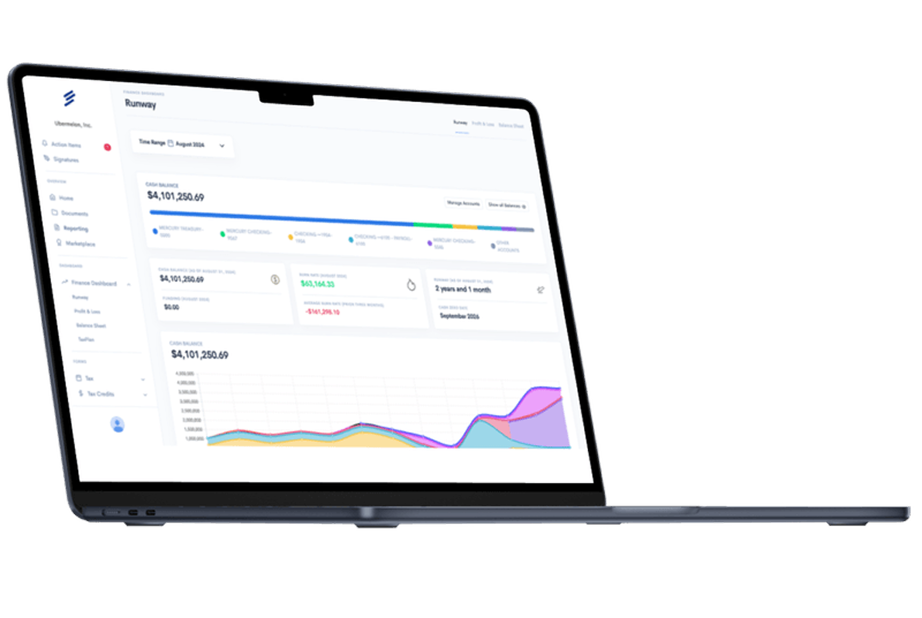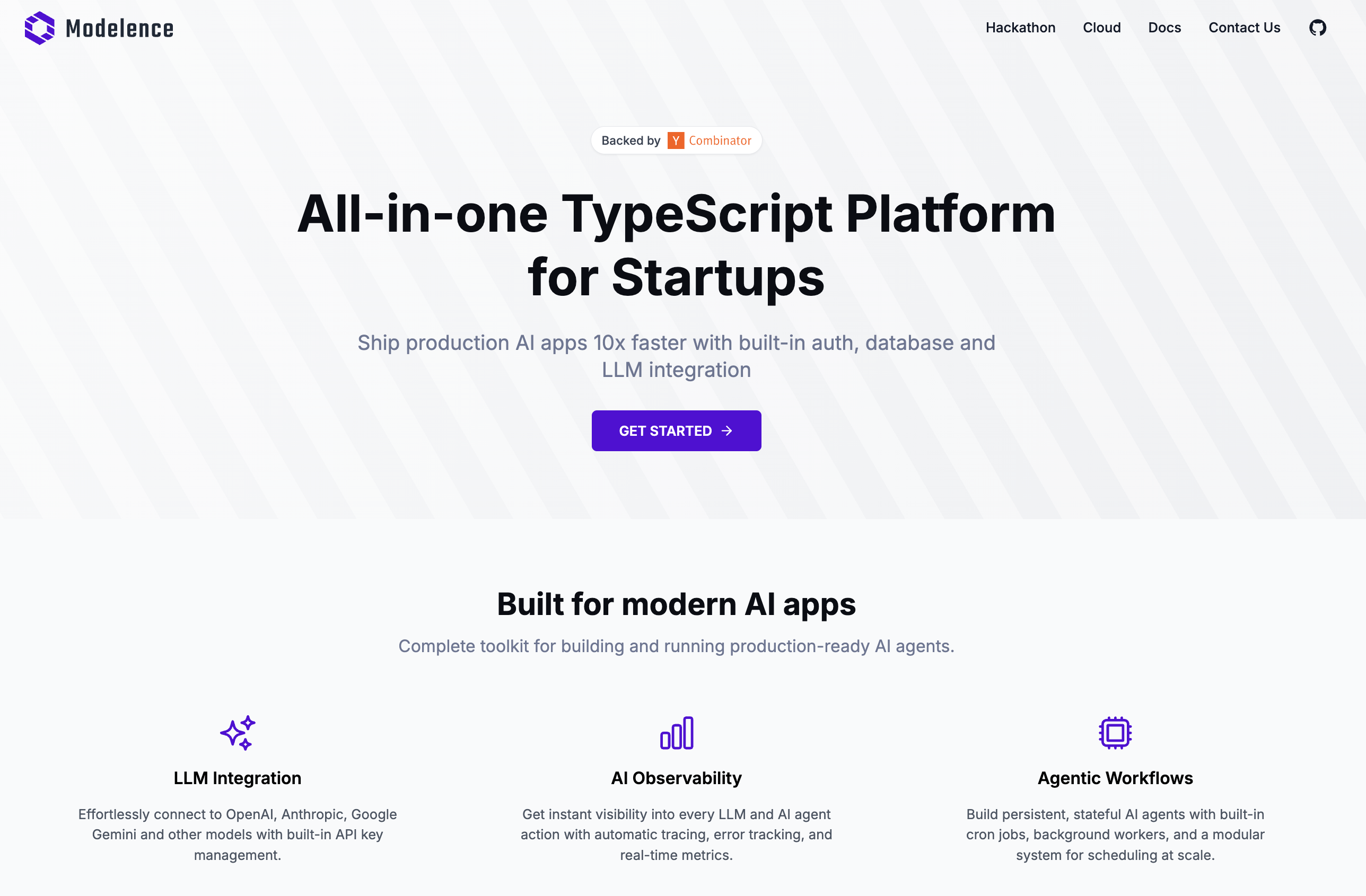Choosing the right accounting and payroll software isn't just a matter of convenience—it's a strategic decision that impacts operational efficiency, compliance, and financial accuracy.
Choosing the right accounting and payroll software isn't just a matter of convenience—it's a strategic decision that impacts operational efficiency, compliance, and financial accuracy. For many businesses, the choice often comes down to two major players: ADP and QuickBooks. While QuickBooks has established itself as the dominant accounting software with approximately 80% market share for small businesses, ADP remains a powerhouse in the payroll processing sector with decades of industry experience.
This comparative analysis comes at a critical juncture when businesses are increasingly seeking integrated solutions that eliminate data silos between accounting and payroll functions. The frustration many business owners express when attempting to connect these systems highlights a significant pain point in the market. The stakes are high—inefficient integration between payroll and accounting systems can lead to duplicate data entry, reconciliation nightmares, compliance issues, and wasted labor hours that directly impact the bottom line.
Core Capabilities: What Each Platform Brings to the Table
ADP and QuickBooks represent different approaches to business financial management, with each platform offering distinct core capabilities. ADP, particularly its RUN platform for small businesses, positions itself as a comprehensive payroll and HR solution. Its strengths lie in managing complex payroll scenarios, including multi-state tax compliance, various employee classifications, and specialized industry requirements. ADP handles all aspects of payroll processing, tax filing, and compliance reporting with considerable expertise, backed by decades of experience in the field.
The platform also offers robust HR features that extend beyond basic payroll functions. These capabilities include employee onboarding, benefits administration, time tracking, and comprehensive reporting tools that serve businesses from startup to enterprise scale. ADP's specialized focus on payroll processing makes it particularly valuable for organizations with complex workforce needs or strict compliance requirements.
QuickBooks' Accounting-First Approach
QuickBooks developed as an accounting-first platform with payroll capabilities added later. Its primary strength remains in general accounting functions—tracking income and expenses, managing accounts receivable and payable, generating financial reports, and providing comprehensive tax preparation tools. QuickBooks Online has become increasingly popular for its user-friendly interface and accessibility across various business types.
While QuickBooks does offer its own payroll services, these features were developed secondarily to its accounting capabilities and may not match ADP's depth in complex payroll scenarios. The fundamental difference between these platforms influences how businesses approach integration, with QuickBooks excelling at providing a holistic view of business finances but potentially lacking the specialized payroll expertise of ADP.
Integration Capabilities: Connecting Payroll with Accounting
The integration between ADP and QuickBooks has historically been a pain point for many businesses, though recent improvements have streamlined the process. Current integration options allow for the automatic transfer of payroll data from ADP to QuickBooks, eliminating the need for manual journal entries. The primary integration method involves using ADP's General Ledger Interface (GLI) to map payroll data to the appropriate accounts in QuickBooks.
This connection enables businesses to maintain ADP's robust payroll processing while seamlessly transferring the financial data to QuickBooks for comprehensive accounting. The integration setup requires coordination between both platforms, starting with establishing the connection in QuickBooks through the Apps section. Users search for the ADP Run app and follow authentication prompts to link their existing ADP account.
Setting Up the Integration Process
The ADP side requires accessing General Ledger settings under the Payroll menu and selecting QuickBooks Online as the accounting software. The critical step involves mapping the Chart of Accounts between the two systems, ensuring that payroll items in ADP correctly correspond to the appropriate general ledger accounts in QuickBooks. This mapping process prevents data misalignment that could create reconciliation problems down the line.
Once configured, the workflow becomes relatively straightforward. Users run payroll through ADP as normal, and the system automatically generates the corresponding general ledger entries in QuickBooks. However, users should be prepared for potential challenges, particularly with Chart of Accounts mapping, as most integration errors stem from mismatched account mapping rather than technical connection issues.
Cost Comparison: Analyzing the Investment Required
When comparing the cost structures of ADP and QuickBooks, businesses face significantly different pricing models that impact the total investment required. QuickBooks offers more transparent pricing, with QuickBooks Online Plus starting around $45 per month plus $5 per employee for payroll services. These costs are generally predictable and clearly outlined, allowing businesses to easily calculate their expected expenses.
QuickBooks frequently offers promotional discounts for the first few months of service, further reducing initial costs. The platform's pricing structure remains relatively stable and predictable as businesses grow, making budget planning more straightforward for most organizations. This transparency helps businesses understand their long-term financial commitment without surprises.
ADP's Complex Pricing Structure
ADP implements a more complex, customized pricing structure that isn't publicly available. ADP RUN typically starts around $59 per month plus $4-$6 per employee, though actual costs vary widely based on the specific services selected and business size. Many users report that as they add more services to their ADP package, costs can increase substantially without clear visibility into pricing beforehand.
The total cost of ownership extends beyond the base subscription fees. Businesses using both systems incur the combined costs of QuickBooks for accounting plus ADP for payroll. Integration itself doesn't typically carry additional fees, but the time investment required to set up and maintain the integration represents a hidden cost that many businesses underestimate.
User Experience: Navigating the Platforms
The user experience differs substantially between ADP and QuickBooks, reflecting their different development approaches and primary functions. QuickBooks is widely praised for its intuitive, user-friendly interface designed with small business owners in mind. Its dashboard presents financial information in clear visual formats, with navigation that follows logical workflows for accounting tasks.
Many users with limited accounting backgrounds can quickly become proficient with QuickBooks Online's basic functions. The platform's design philosophy emphasizes accessibility and minimizing the learning curve for non-financial professionals. This user-friendly approach has contributed significantly to QuickBooks' dominant market position among small businesses.
ADP's Specialized Interface Design
ADP's interface, particularly in its RUN platform, presents a more specialized experience focused on payroll processing. While recent updates have improved usability, many users still describe ADP as having a steeper learning curve than QuickBooks. The platform's comprehensive payroll features create a necessarily more complex interface that requires greater familiarity with payroll concepts and terminology.
When using both systems together, users must navigate between distinct interfaces with different design philosophies. The integration itself requires understanding both systems well enough to properly map accounts and troubleshoot connection issues. Some users report frustration with this dual-system approach, particularly when the integration breaks and requires reconfiguration.
Customer Support: Getting Help When You Need It
The quality and accessibility of customer support represent a significant differentiator between ADP and QuickBooks, with contrasting approaches that reflect their business models. ADP emphasizes personalized support, particularly in its higher-tier plans, which assign dedicated payroll specialists to client accounts. This human-centered approach provides businesses with consistent contact points who understand their specific setup and history.
Many ADP users highlight this as a major advantage, especially when dealing with complex payroll or compliance issues. The platform offers 24/7 customer service availability, which proves valuable for growing businesses that need reliable support during critical payroll periods. ADP's support representatives typically demonstrate deeper expertise in payroll-specific issues and compliance requirements.
QuickBooks Support Challenges
QuickBooks has faced persistent criticism for its support quality. Many users report long wait times, inconsistent answers, and difficulty reaching knowledgeable representatives. The frustration is evident in community forums, where users frequently complain about representatives who lack familiarity with integration processes or provide conflicting information.
The support gap becomes especially apparent when users encounter integration problems. Several forum posts indicate that QuickBooks support representatives are often unfamiliar with the ADP integration process, leading users to seek help directly from ADP or from community forums. This lack of cross-platform expertise can lead to significant frustration during setup or when troubleshooting integration failures.
Scalability: Growing with Your Business
The scalability of financial systems represents a critical consideration for businesses with growth ambitions. ADP demonstrates significant advantages in this area, particularly for companies anticipating complex expansion. The platform is designed to accommodate businesses from startup phase through enterprise scale, with tiered offerings that add capabilities as organizations grow.
ADP excels at handling multi-state operations, complex tax situations, and expanding workforces with diverse classification needs. For businesses anticipating geographic expansion or significant headcount increases, ADP's infrastructure provides a runway for growth without requiring system migration. The platform's compliance expertise becomes increasingly valuable as businesses encounter more complex regulatory requirements.
QuickBooks Growth Limitations
QuickBooks offers reasonable scalability within the small to mid-sized business range, with tiered offerings from QuickBooks Simple Start through QuickBooks Advanced. However, many businesses find they eventually outgrow QuickBooks' capabilities, particularly when they reach 50+ employees or develop complex organizational structures. The software's limitations become apparent in handling multi-entity operations, advanced inventory needs, or sophisticated project accounting requirements.
When using the integrated approach, scalability depends on how well the connection between systems handles increased volume and complexity. Some users report that the integration becomes more problematic as transaction volume increases, requiring more frequent troubleshooting. Businesses anticipating rapid growth should consider how their financial technology stack will evolve over time.
Industry-Specific Considerations: Finding the Right Fit
Different industries face unique accounting and payroll challenges that influence the suitability of ADP versus QuickBooks or their integrated use. Service-based businesses with straightforward operations and limited employees often find QuickBooks' all-in-one approach sufficient for their needs. The software's project tracking, time billing, and simplified payroll features adequately serve professional services firms, creative agencies, and consulting practices without complex requirements.
Industries with specialized payroll needs present compelling use cases for ADP's expertise. Construction companies dealing with prevailing wage requirements, restaurants managing tipped employees, healthcare organizations with complex shift differentials, and agricultural businesses with seasonal workers often benefit significantly from ADP's specialized payroll capabilities. These industries frequently find that ADP's compliance expertise and specialized features justify the additional complexity of integration management.
Key Industry Applications
Businesses should consider how their industry-specific requirements align with each platform's strengths:
- Construction and Manufacturing: ADP excels at handling prevailing wage calculations, union reporting, and complex overtime rules that are common in these industries
- Healthcare and Professional Services: QuickBooks provides strong project tracking and billing capabilities, while ADP manages complex shift differentials and compliance requirements
- Retail and Hospitality: ADP's tipped employee management and scheduling integration prove valuable, while QuickBooks handles inventory and point-of-sale integration effectively
- Nonprofit Organizations: QuickBooks offers fund accounting capabilities, while ADP manages grant-based payroll allocations and specialized reporting requirements
Regulatory considerations also impact this decision significantly. Highly regulated industries like healthcare, financial services, and government contractors face stringent compliance requirements that may be better addressed through ADP's specialized expertise. Companies operating in multiple states or countries contend with complex tax jurisdictions that ADP navigates more effectively than QuickBooks' additional fees for each state jurisdiction.
Implementation Strategy: Planning for Success
Successfully implementing either ADP, QuickBooks, or their integrated use requires careful planning and execution. For businesses adopting the integrated approach, the implementation sequence matters significantly. Most experts recommend first establishing the accounting system (QuickBooks) and developing a comprehensive Chart of Accounts that accommodates both accounting and payroll needs.
Once the accounting foundation is established, implementing ADP as the payroll system becomes more straightforward, as the Chart of Accounts mapping process has clear targets in the pre-existing QuickBooks structure. The integration setup itself requires several critical steps, starting with activating the General Ledger feature in ADP, typically requiring coordination with an ADP representative.
Critical Implementation Steps
The most crucial and time-consuming phase involves mapping each payroll item in ADP to the corresponding general ledger account in QuickBooks. This process demands careful attention to detail and accounting knowledge to ensure payroll expenses, liabilities, and tax items flow correctly into the financial statements. Proper account mapping prevents future reconciliation problems and ensures accurate financial reporting.
Testing represents an essential but often overlooked phase of implementation. Before relying on the integration for live payroll processing, businesses should conduct thorough testing with sample payrolls to verify that data transfers correctly and appears in the appropriate QuickBooks accounts. Common implementation challenges include Chart of Accounts misalignment, connection authentication issues, and data synchronization delays.
Best Practices for Long-Term Success
Maintaining a successful ADP and QuickBooks integration requires ongoing attention and systematic approaches to prevent common problems. Businesses that establish clear procedures and regular maintenance schedules typically experience fewer disruptions and more reliable data flow between their systems.
Regular monitoring of the integration helps identify potential issues before they become major problems. Monthly reconciliation procedures should include verifying that payroll totals in ADP match the corresponding entries in QuickBooks, checking that all payroll liabilities are properly recorded, and ensuring tax deposits align between both systems.
Essential Maintenance Procedures
Successful long-term integration management requires systematic attention to several key areas:
- Monthly Data Verification: Compare payroll summaries between ADP and QuickBooks to identify discrepancies early, review general ledger entries for accuracy, and verify that all payroll taxes and liabilities are properly recorded
- Quarterly System Updates: Test integration functionality after software updates from either platform, review and update Chart of Accounts mapping as business needs evolve, and document any changes to integration settings
- Annual Compliance Reviews: Ensure tax reporting aligns between both systems, verify that year-end payroll data transfers correctly, and update integration settings for new tax years or regulatory changes
- Staff Training and Documentation: Maintain current documentation of integration procedures, train backup staff on troubleshooting common issues, and establish clear escalation procedures for technical problems
Documentation plays a crucial role in long-term success. Businesses should maintain detailed records of their integration setup, including account mapping decisions, troubleshooting procedures, and contact information for technical support. This documentation proves invaluable when training new staff or resolving integration issues that may arise months after initial setup.
Making the Strategic Decision for Your Business
The decision between ADP, QuickBooks, or their integrated use ultimately depends on your business's specific priorities, size, complexity, and growth trajectory. For businesses where accounting simplicity is paramount and payroll needs are straightforward, QuickBooks with its built-in payroll module may provide sufficient functionality without the complexity of integration. This approach works well for small service businesses, solo practitioners, and organizations with minimal payroll complexity.
The all-in-one approach offers simplicity and cost advantages that make it attractive for businesses prioritizing ease of use over specialized functionality. However, organizations with complex payroll requirements—multiple states, varied worker classifications, specialized industry needs, or strict compliance concerns—often benefit significantly from ADP's specialized expertise, even if it means implementing integration with QuickBooks.
Evaluating Your Business Needs
The integrated approach, while requiring more initial setup and ongoing maintenance, offers a comprehensive solution for many mid-sized businesses. It combines QuickBooks' accounting strengths with ADP's payroll expertise, creating a robust financial management system. Despite occasional integration challenges, many businesses find that the automation benefits outweigh the complexities once the systems are properly configured.
Consider these factors when making your decision:
- Business Size and Complexity: Companies with fewer than 10 employees and simple payroll needs may find QuickBooks sufficient, while larger organizations or those with complex requirements benefit from ADP's specialized capabilities
- Industry Requirements: Highly regulated industries or those with specialized payroll needs typically require ADP's expertise, while service-based businesses often succeed with QuickBooks alone
- Growth Trajectory: Rapidly growing businesses should consider ADP's scalability advantages, while stable small businesses may prefer QuickBooks' simplicity and cost-effectiveness
- Technical Resources: Organizations with limited IT support may struggle with integration maintenance, making single-platform solutions more attractive
Regardless of which approach you choose, success depends on thoughtful implementation, proper training, and regular maintenance of your financial systems. By carefully evaluating your specific business requirements against the strengths and limitations of each option, you can make an informed decision that supports your financial operations both now and as your business evolves.
Transform Your Financial Management Strategy Today
The choice between ADP, QuickBooks, or their integrated combination represents more than a software decision—it's a strategic investment in your business's operational efficiency and growth potential. Each approach offers distinct advantages that align with different business models, sizes, and industry requirements. The key lies in matching your specific needs with the platform strengths that will deliver the greatest long-term value.
Businesses that take time to properly evaluate their requirements, test integration capabilities, and invest in thorough implementation typically achieve better outcomes regardless of their chosen approach. Whether you prioritize QuickBooks' accounting simplicity, ADP's payroll expertise, or the comprehensive coverage of their integration, success depends on aligning your choice with your operational reality and growth ambitions. The investment in proper setup and ongoing maintenance pays dividends through improved accuracy, reduced manual work, and better compliance management that supports sustainable business growth.
Simplify Startup Finances Today
Take the stress out of bookkeeping, taxes, and tax credits with Fondo’s all-in-one accounting platform built for startups. Start saving time and money with our expert-backed solutions.
Get Started









.png)









